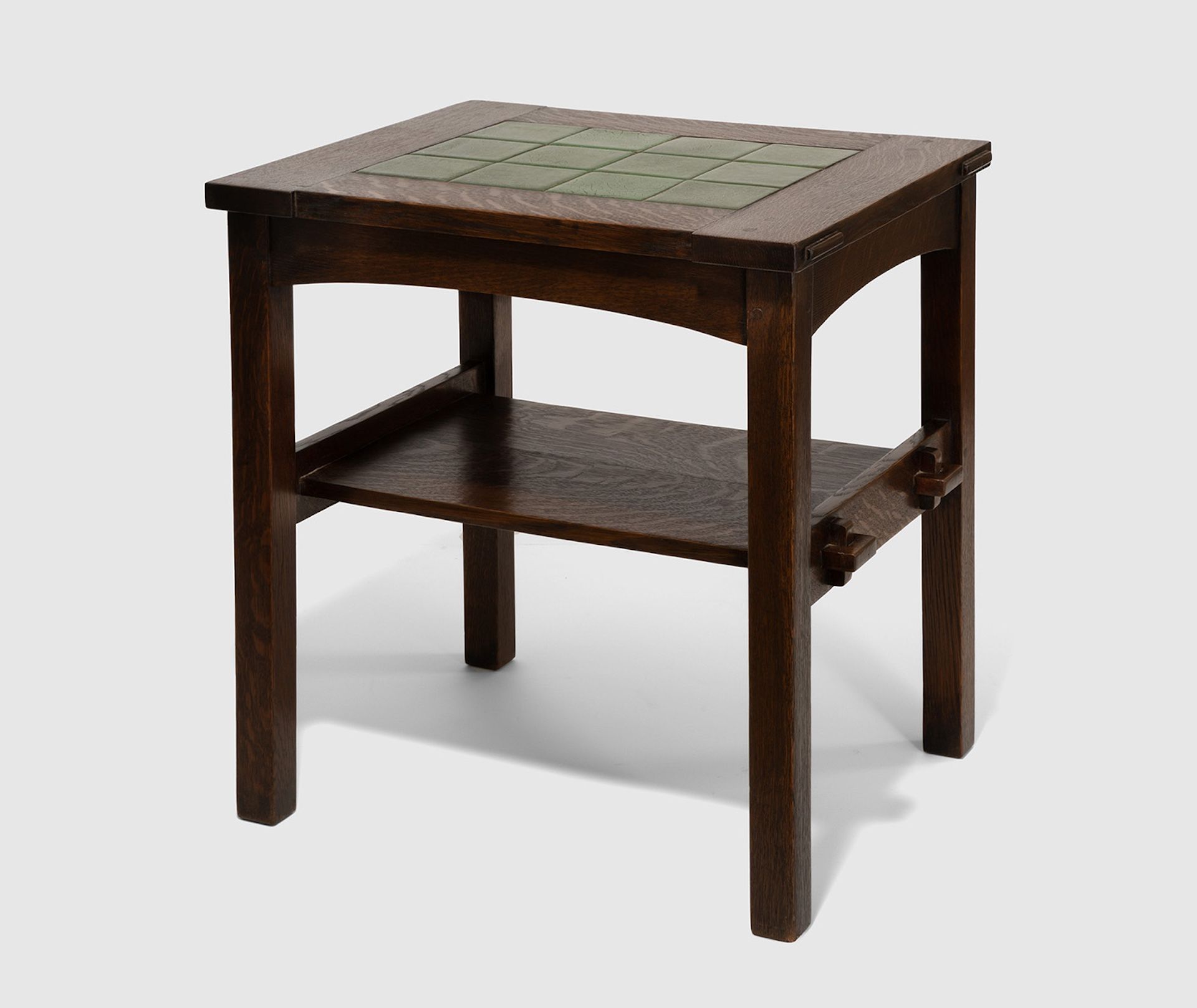DESIGN COLLECTING JANUARY 11 2024
by Daniella Ohad
Daniella Ohad recaps her weekly conversations with experts in design collecting
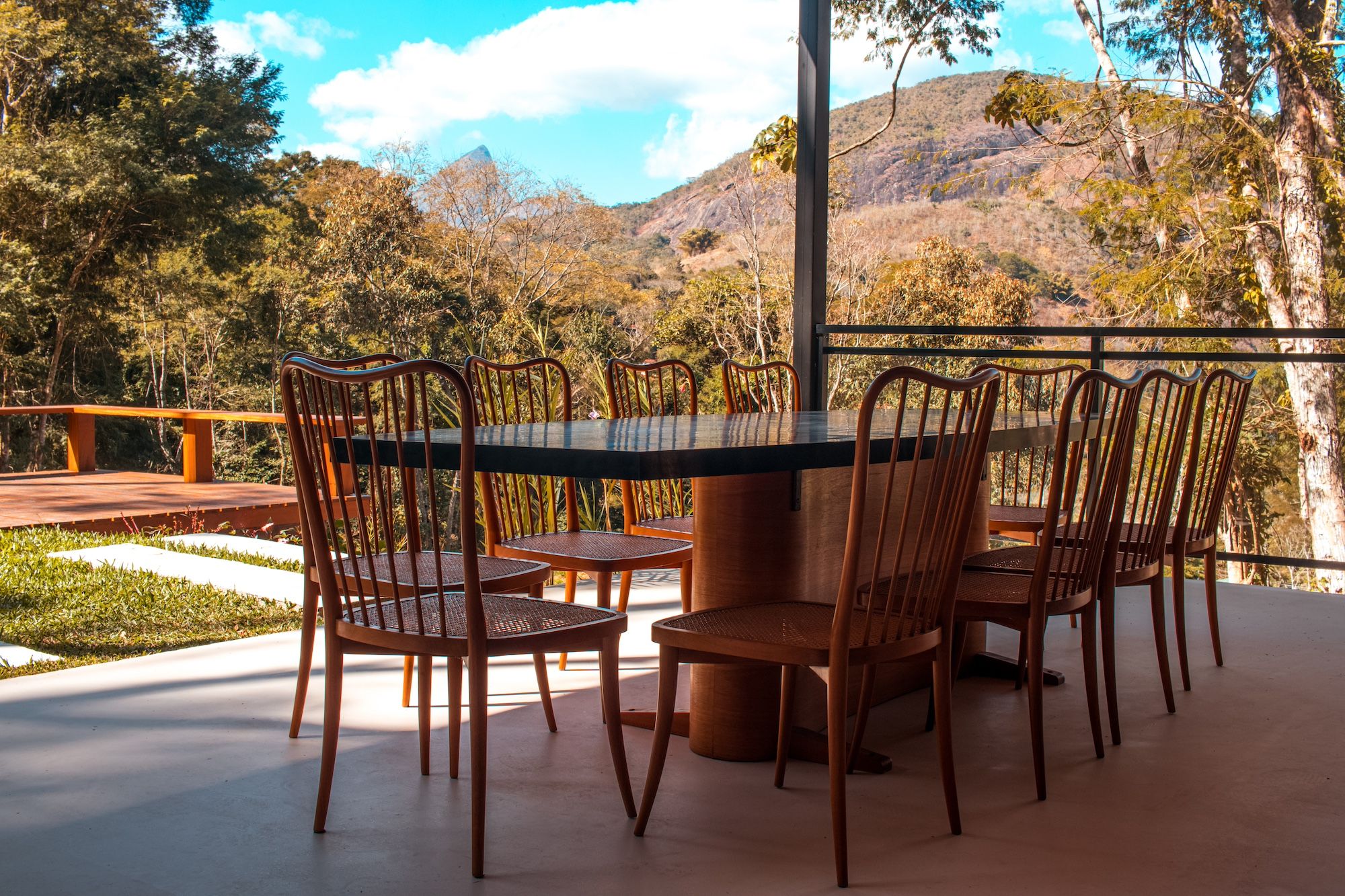
JOAQUIM TENREIRO/ DINING ROOM SET FOR LANGENBACH & TENREIRO, 1948
Photo © Mercado Moderno
Comprising one-on-one interviews with international experts, Collecting Design: History, Collections, Highlights was a Fall 2023 webinar program hosted by Daniella Ohad for Christie’s Education. For the Design Miami/ Forum, Ohad has recapped each conversation. Read on for highlights from her conversation with Mírian Badaró of Mercado Moderno in Rio de Janeiro.
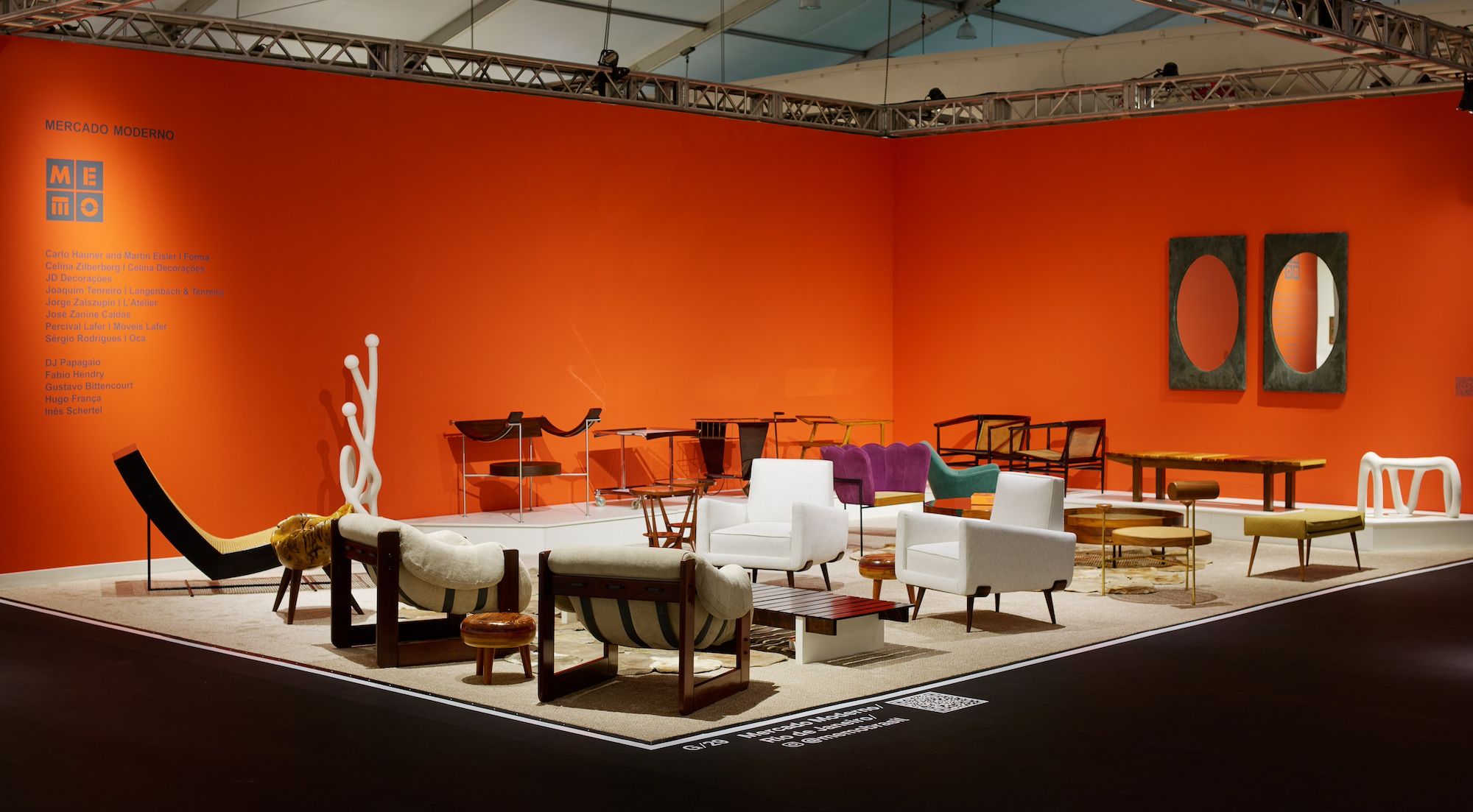
MERCADO MODERNO AT DESIGN MIAMI/ 2023
Photo © James Harris for Design Miami
When Brazilian postwar furniture began to surface in the international design conversation in the early 2000s, led in large part by New York gallery R & Company, the genre was hailed by many as the last great body of modernist design awaiting rediscovery. Over the two decades since, Brazilian Modern has slowly but steadily seen a rising connoisseurship, emerging from behind the shadows cast by postwar furniture from France, Italy, Scandinavia, and the US to establish its place at the forefront of the collectible design market. Today, it is among the most desirable areas of historical design, admired by collectors, architects, interior designers, and museum curators for its unique sensibility, elegantly sensuous forms, richly grained hardwoods, sumptuous leathers and caning, and regional handcraft traditions.
As the work of 20th-century Brazilian design stars like José Zanine Caldas, Joaquim Tenreiro, Jorge Zalszupin, and Lina Bo Bardi has achieved blue-chip status, the market has been inundated with fakes and re-editions, signaling that much research and scholarship is still needed to more precisely discern the excellent from the mediocre—because it is often the small details that make all the difference.
To discover insights into this special moment in design history, I invited Mírian Badaró, Director of Mercado Moderno, to my Collecting Design webinar series. Badaró’s Rio de Janeiro-based gallery is one of the world’s most trusted sources for exceptional, authentic Brazilian Modern, a pioneer in the market, and a long-time exhibitor in the highest calibur fairs. Our conversation covered the foundations of modernism in Brazil and its expression in the work of three visionary talents: Joaquim Tenreiro, José Zanine Caldas, and Abraham Palatnik.
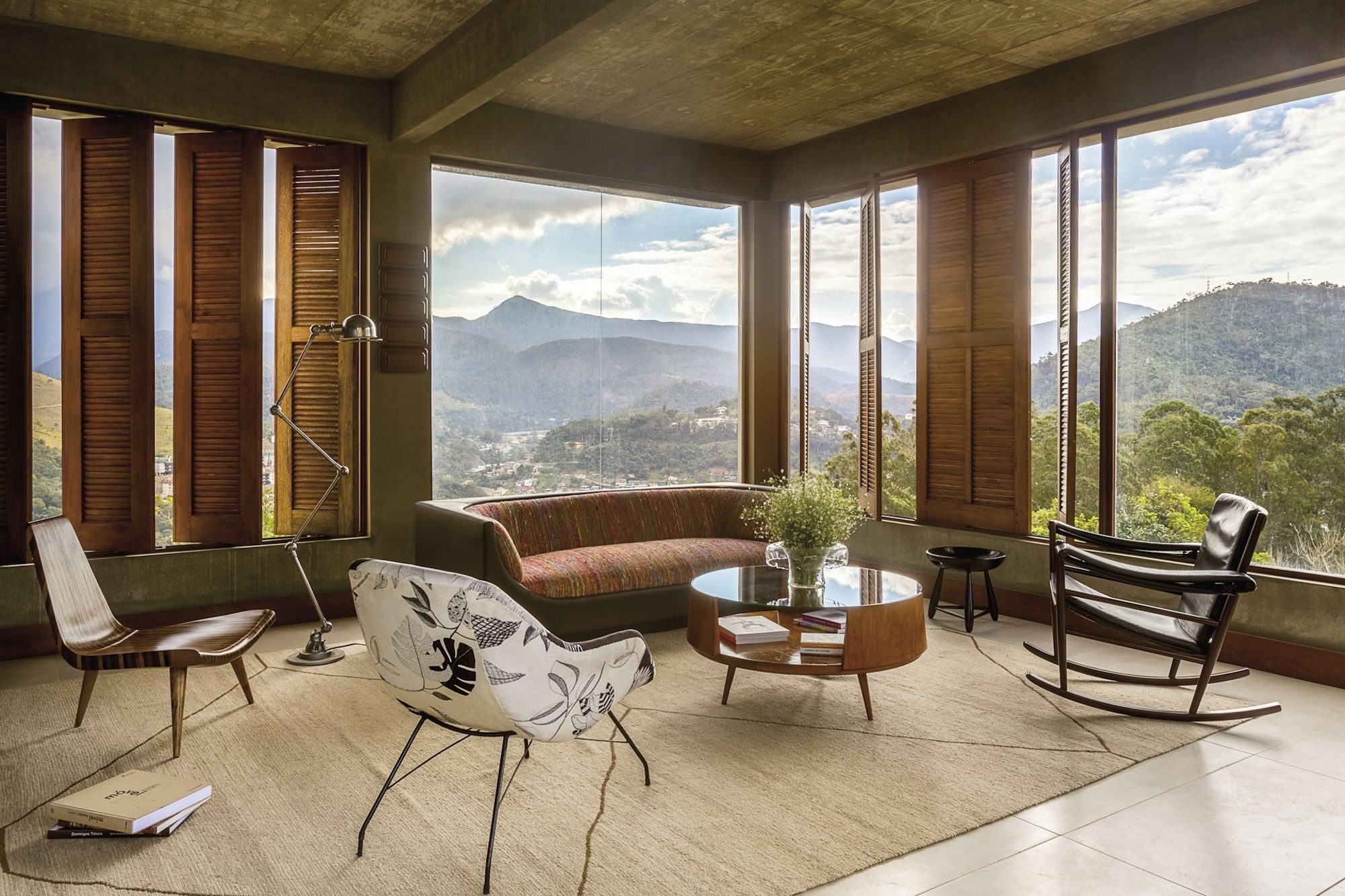
THE INTERIOR OF A HOUSE IN ITAIPAVA FEATURED IN MERCADO MODERNO'S BOOK, MÓVEL BRASILEIRO MODERNO, PUBLISHED IN 2012
Photo © Mercado Moderno
Modernist design principles—such as form follows functions, minimalist aesthetics, and honesty in materials—found fertile ground when transplanted from Europe to Brazil in the postwar years. Led by a small cadre of European émigrés in tandem with local practitioners, modernism took on a distinct, more relaxed and organic character in Brazil, inspired by vernacular forms and processes, native woods, and the tropical climate.
Brazilian Modern and its legacy is inextricably entwined with the work of legendary Brazilian architect Oscar Niemeyer (1917–2012)—most notably his master plan for Brasília, the ambitious new capital city initiated by president Juscelino Kubitschek and inaugurated in 1960. Niemeyer’s lyrically biomorphic yet precisely executed architecture for Brasília became the most influential international face of Brazilian Modern in the 20th century. But Neimeyer wasn’t the country’s only modernist trailblazer. Swiss-born Le Corbusier designed a never-realized master plan for Rio in 1929 and collaborated with Neimeyer and French-born Brazilian architect Lúcio Costa (1902–1998) on Rio’s famous Ministry of Health and Education headquarters, completed in 1943. Costa and Neimeyer also collaborated on the Brazilian Pavilion at the New York World's Fair in 1939, and Costa made significant contributions to Brasília as well.
In the second half of the 20th century Brazilian architect Paulo Mendes Da Rocha (1928–2021), who won the Pritzker Prize in 2006, was instrumental in the development and dissemination of the much lauded São Paulo Brutalism style, and Brazilian landscape architect Roberto Burle Marx (1909–1994) was responsible for the iconic, world-renowned Copacabana Promenade, among other beloved public spaces and gardens that embrace the grammar of Brazil’s tropical flora and fauna. When Italian architect Lina Bo Bardi (1914–92) settled in São Paulo in the 1940s, she became a powerful international voice for Brazilian Modern, as well as one of the most fascinating women architects of the 20th century.

JOAQUIM TENREIRO/ PALHINHA ARMCHAIRS, 1958
Photo © Mercado Moderno
Some of the most sought-after and refined Brazilian Modern furniture was created by master craftsman Joaquim Tenreiro (1906–1992), who immigrated to Rio from Portugal in the late 1920s. In 1943, he established Langenbach & Tenreiro Ltd., which included a furniture workshop outside the city and a showroom in Rio’s upscale shopping district. His high-profile and affluent clients included Niemeyer.
Tenreiro’s expertise in wood and artisanal techniques began with lessons from his Portuguese father and grandfather, both carpenters and joiners. Fueled by a daring vision, he was particularly adept at adapting his old-world woodworking knowledge to Brazilian hardwoods, such as jacarandá, imbuia, roxinho, pau marfim, and cobréuva, to achieve extraordinary lightness, minimalism, and transparency—especially through the use of caning. His work exemplifies the uniquely Brazilian expression of modernist principles.
One of his most iconic designs, the Cadeira de Três Pés (Three-Legged Chair), is made of five, laminated solid woods, a construction method that entails inordinate proficiency and artistry in equal measure.


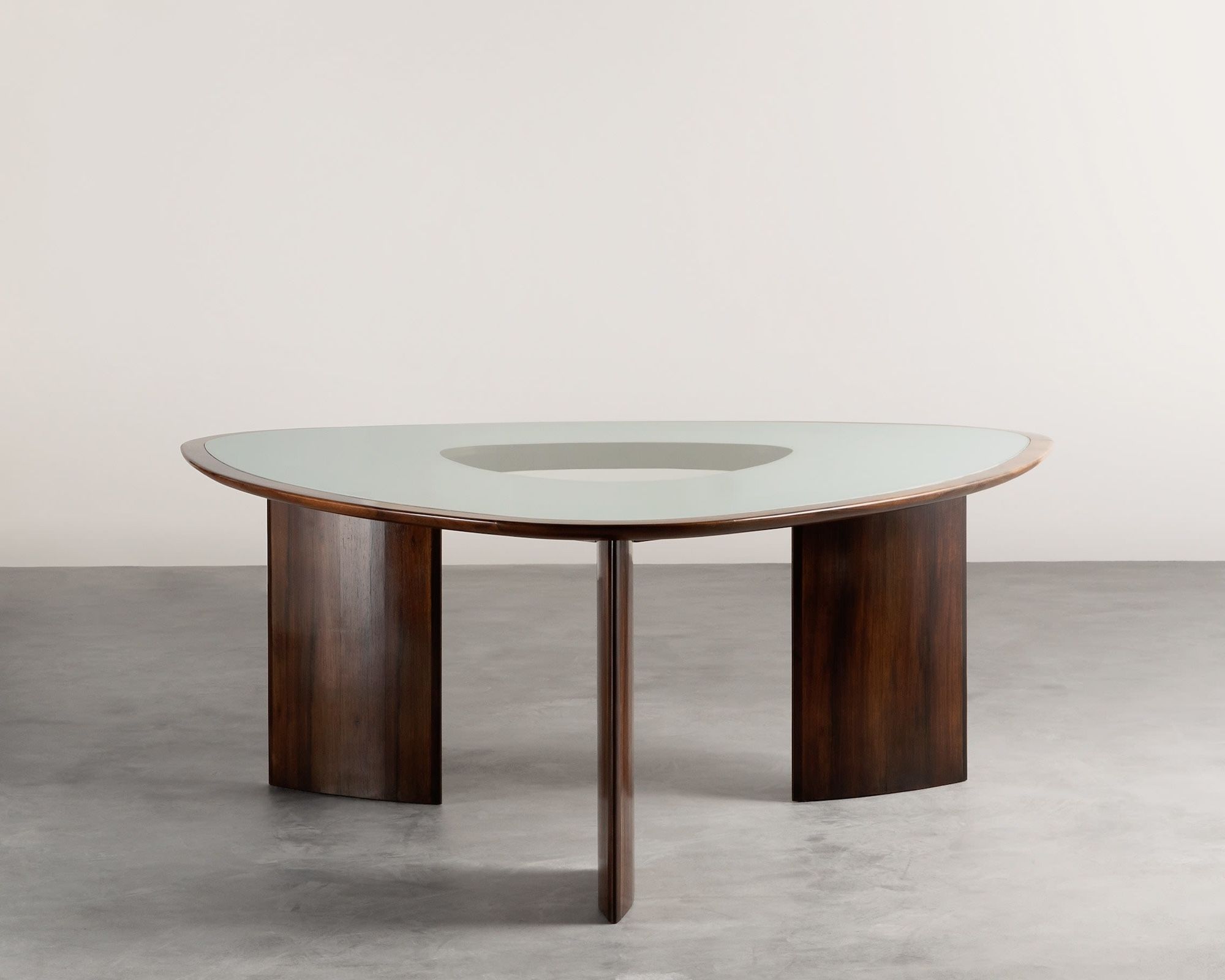
JOAQUIM TENREIRO/ CADEIRA DE TRÊS PÉS, 1947; CHAISE LONGUE, 1947; AND TRIANGULAR TABLE, 1960S
Photos © Carpenters Workshop Gallery
Badaró called Joaquim Tenreiro: Masterworks, the recent exhibition at Carpenters Workshop Gallery, a “milestone” in the designer’s connoisseurship. Focused primarily on contemporary design, Carpenters introduced historical Brazilian Modern into its program this past year with multiple shows, both onsite in Paris and London and online, in a demonstration of the genre’s rising prominence in the collectible design market. With plans for another show in New York this Spring, the gallery’s Tenreiro show in Paris featured exceptional pieces, mostly bespoke, that underscored the designer’s innovations in form and unparalleled woodworking skills, which in turn contributed greatly to the understanding and valuation of Tenreiro’s work while attracting new audiences.
An expert eye, we learned from Badaró, is needed to discern the small details that make Tenreiro's work great. Featuring a hardwood frame with a verre églomisé (painted glass) top, his acclaimed Triangular Table, she demonstrated, is a perfect example of his intricate, artistic approach to fabrication—apparent only when the table is viewed upside down. The design in reproduction no longer uses rosewood, which has been banned from the market, and lacks the magnificent richness of the vintage version.
Tenreiro’s original furniture is rare, because he closed his business in the late 1960s to focus on painting and sculpture.
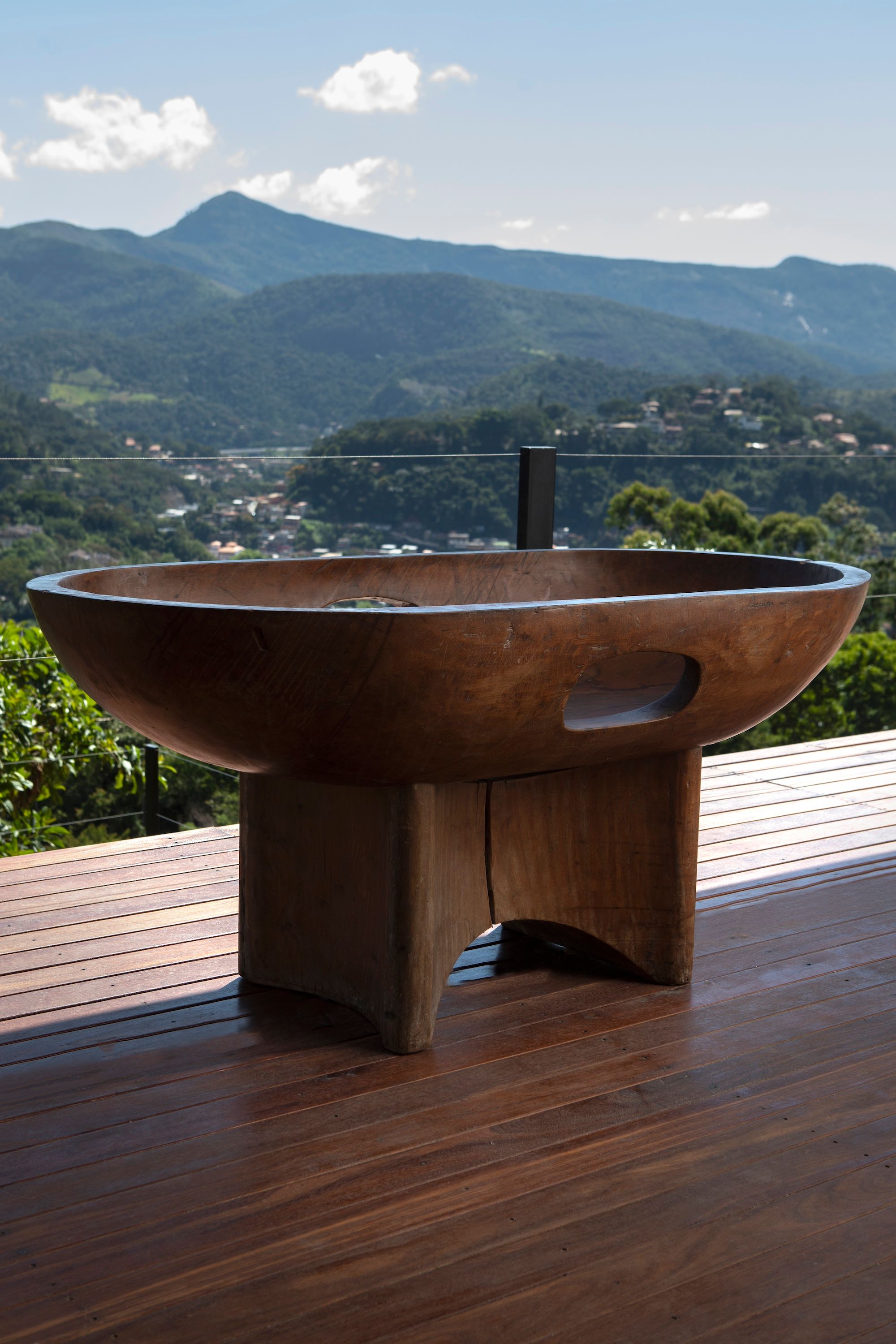
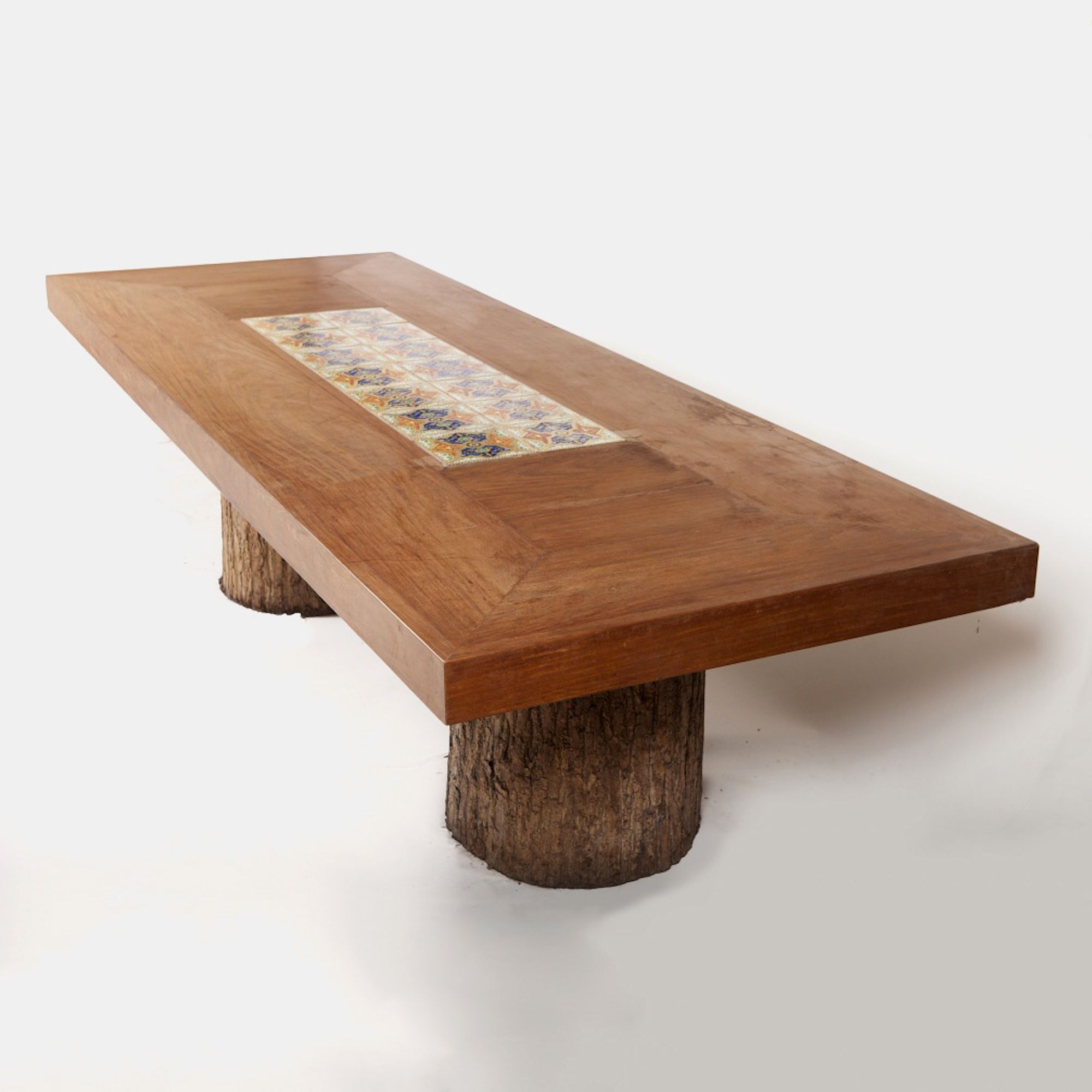
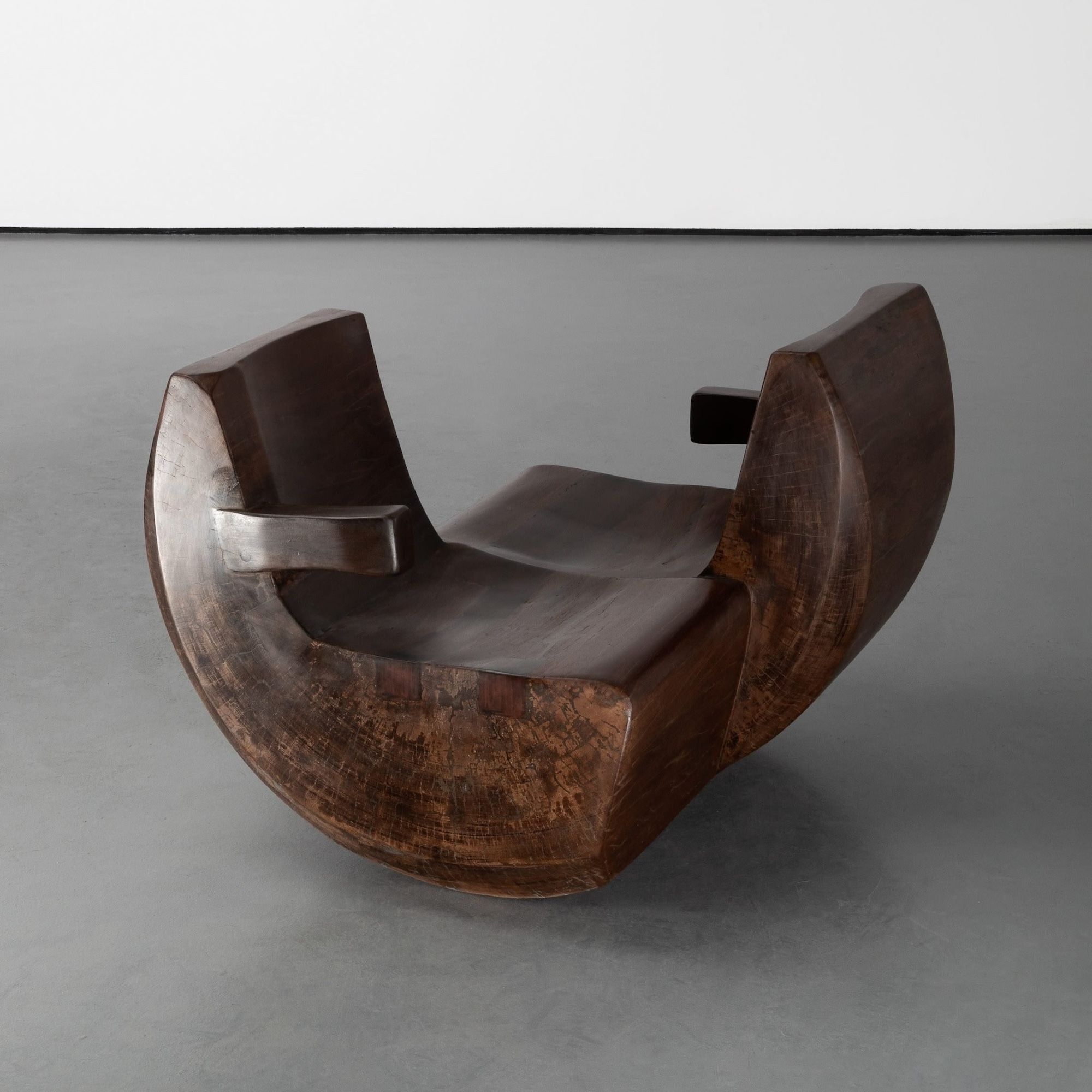
JOSE ZANINE CALDAS/ OVAL TABLE, 1980; SÉRIE DENÚNCIA DINING TABLE, 1970; AND NAMORADEIRA, EARLY 1970S
Photos © Mercado Moderno and Carpenters Workshop Gallery
In the past few years, Tenreiro’s title as the superstar of the Brazilian Modern market has been challenged by architect-artist José Zanine Caldas (1919–2001). The vision, philosophy, and vocabulary of the two designers could not be more different. While Tenreiro designed for bourgeois homes and upscale modernist buildings, Caldas was a radical environmentalist who created furniture as a political statement. His most valued pieces are heavy, biomorphic, and make use of entire tree trunks—powerful designs that are “almost impossible to knock them off,” according to Badaró.
A self-taught architect from the state of Bahia, Caldas launched his career in Rio, earning a reputation as the best architectural model maker in the area. In the late 1940s, he cofounded Fábrica Moveis Artísticos Z, a furniture company dedicated to producing modernist designs in plywood at accessible prices. In the 1950s, he moved back to Bahia and, driven by a passion for forest preservation and environmental stewardship, began to sculpt charismatic, solid-wood furniture from fallen native trees. He used indigenous craft techniques to honor the natural character of the exquisite woods.
Exemplifying what Caldas called his “Forest Furniture, Namoradeira is a double rocking chair crafted from a single massive log. The piece is Caldas’ most emblematic design.
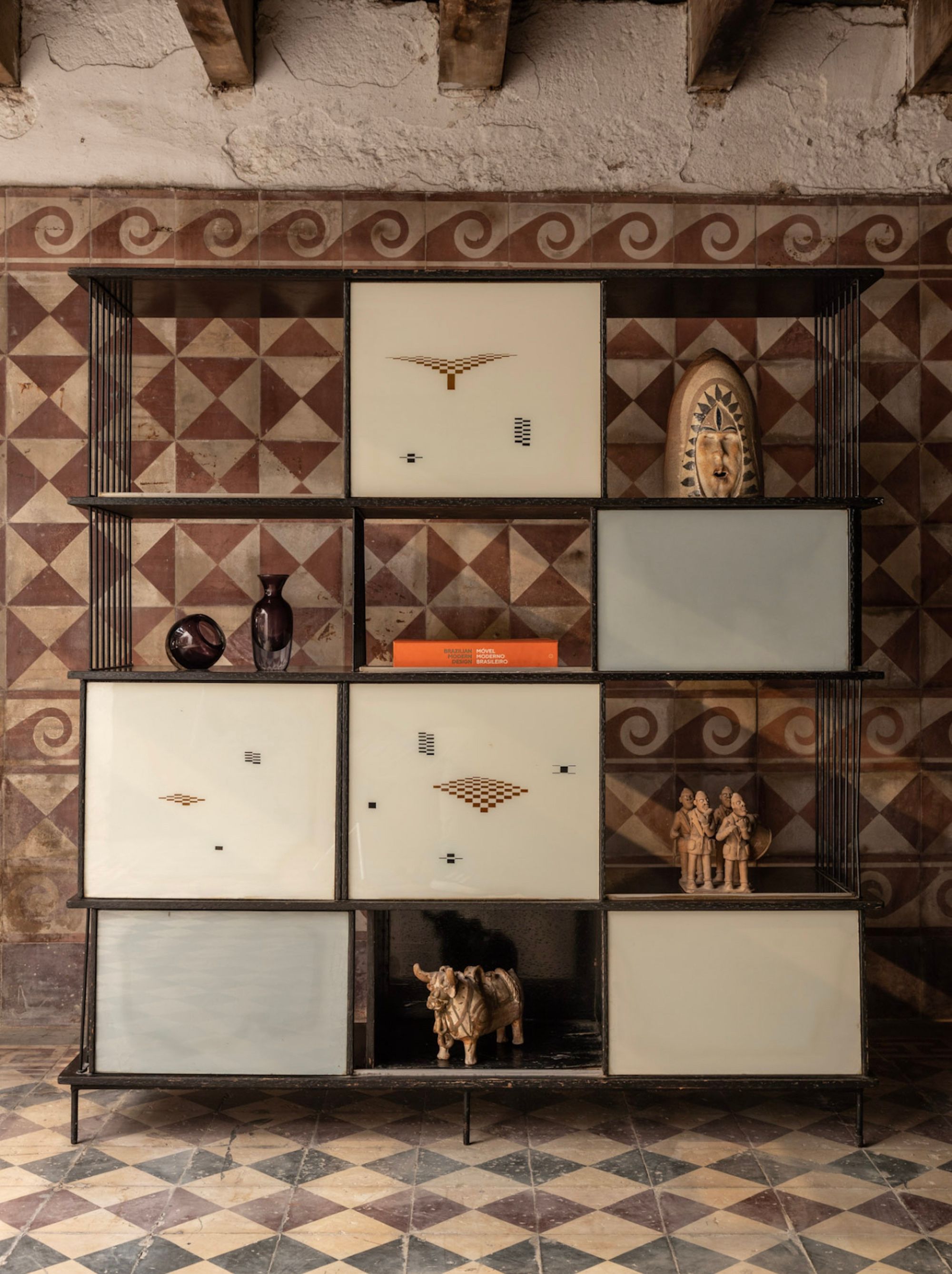
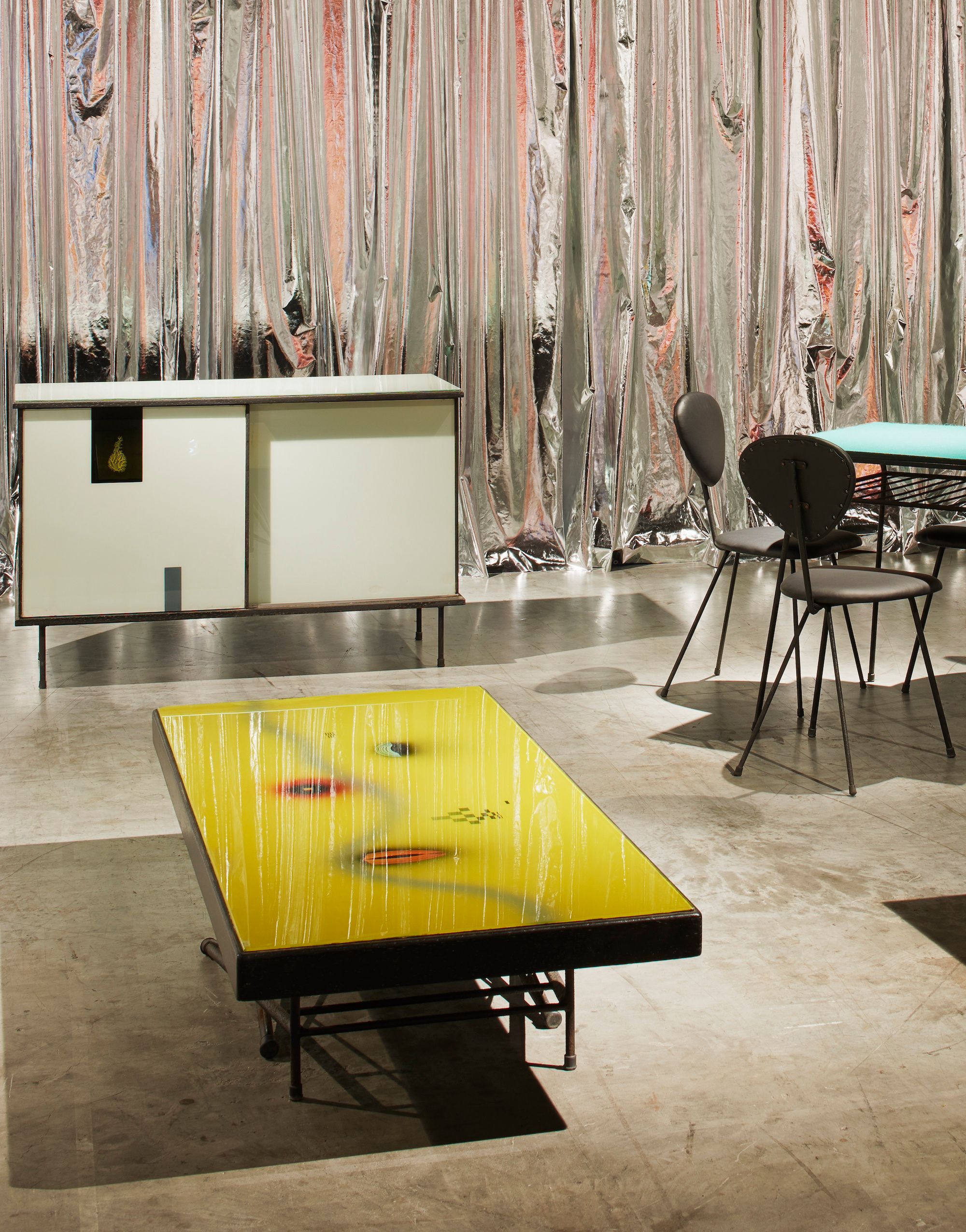
ABRAHAM PALATNIK/ LEFT: BOOKCASE, 1950S; RIGHT: WORKS ON VIEW AT DESIGN MIAMI/ BASEL 2019
Photos © Mercado Moderno
My conversation with Badaró concluded with a fascinating look at the growing interest in the design work of Abraham Palatnik (1928–2020), the Rio-based Israeli-Brazilian kinetic artist who created furniture in the 1960s. Palatnik has long been associated with his series of colorful moving sculptures, but we learned from Badaró that his furniture—often featuring glass panels painted with surrealistic motifs—is no less compelling.
For the past two decades, Mercado Moderno has been collecting Palatnik’s furniture, which looks quite unlike the work of his Brazilian Modern counterparts. This body of work is personal and expressive, perhaps best identified as “art furniture.” One day, Badaró told us, it will be widely recognized as an important contribution to the story of postwar furniture design. Given Mercado Moderno’s track record when it comes to Brazilian Modern in the collectible design market, I have no doubt that she is correct.
The Fall 2023 Collecting Design: History, Collections, Highlights webinar program has concluded.
Registration for Ohad’s Spring 2024 program, Interior Design: Then and Now, is now open! The first webinar of the Spring season takes place on February 21st.

